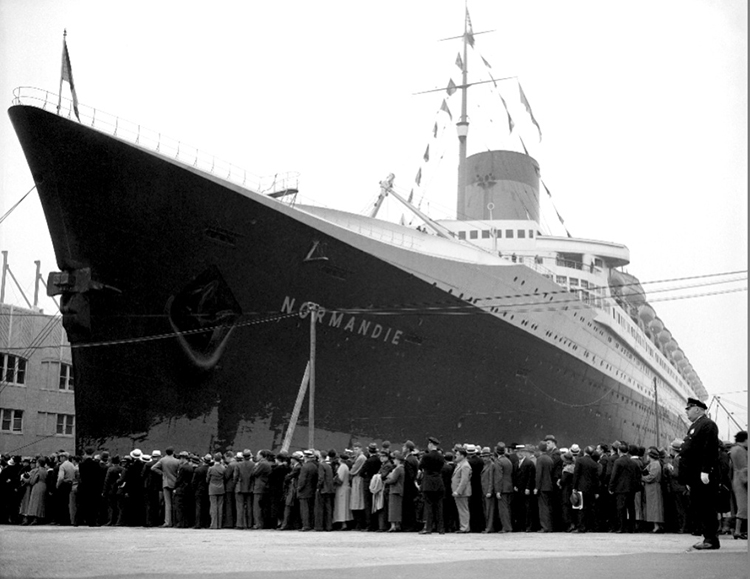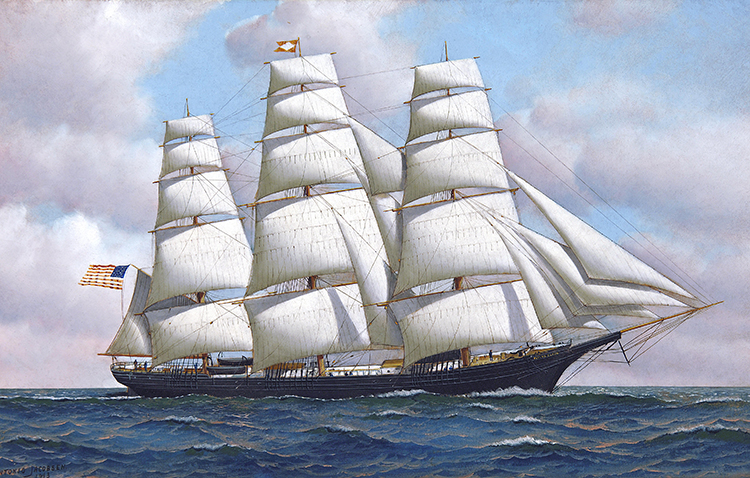When we last talked about the legacy of live aboard boats to the tiny house world we were in the 15th century talking about the sailing vessel. But as the Age of Exploration began to decline and trade routes had been firmly established speed became a major concern as captains, ships, barrons, and even kingdoms fought to bring back tea and spices and other goods from one continent to another. By the 1800s the waters had become literally overrun with clipper ships which to most are the picturesque sailing boat. Known for their streamlined design; their beauty, grace and speed, the clippers actually developed in American boatyards first. They were long, slim, graceful vessels with torpedoing bows and streamlined hulls. Their sails were less bulky (and usually silk) than the square sails of discover boats and were exceptionally large sometimes spanning three tall masts. They were also incredibly fast. In fact, The Flying Cloud, launched in 1851, traveled from New York City to San Francisco in a record 89 days. They also played a role as muse for poets, novelists, and painters.
“I must go down to the seas again, to the lonely sea and the sky; And all I ask is a tall ship and a star to steer her by,” ~ British poet John Masefield, 1902.
And this is truly the time when I see boats becoming a true form of tiny house. Clippers often boasted beautiful and spacious accommodations. The bow would often have a sort of parlor or observation area. The space beneath deck would feature berths, cabins, a galley, a captain’s quarters, and more. Above deck would have both work and leisure areas including benches and hammocks. Form was finally meeting function and dare I say style as lives were being lived fully beneath the silken sails of clipper ships.
Unfortunately, much of this development was set aside as naval vessels began to take precedence and steam-driven boats were the marvel of the day. Around 1830, steam engines served adjunct to sails. The engine connected to paddle wheels on the side. Soon after iron took the place of wood and boats were separated into sail boats, warships, and cargo liners. Sailing vessels continued to be the model for tiny house living for three primary reasons:
- Style. Because they rely on wind and streamlining sailing vessels tended to be more sleek giving longer boats a a faster and more attractive look.
- Efficiency. Wind will always be more economical than coal or other fossil fuels.
- Space. Because life aboard a boat is limited and spaces were used in intelligent fashions. Berths and bunks were hybrid designs of beds, sitting areas, and storage compartments.
Perhaps though the true possibilities of living 365 days a year aboard a boat and it being seen as a tiny house possibility could not exist without the golden era of Passenger Travel.

Because 19th century history is marked by massive emigration from Europe to the Americas and to Australia the need for larger, faster, passenger ships was immense. Initially, immigrants were carried on sailing ships but, depending on the weather, the trip to America could take over 3 months at sea. Steamships with the advantages of speed, regularity and comfort essentially took over after 1850 and the interior of vessels went from a few berths and bunks to entire class systems with amenities increasing in direct parallel to social stature!

The evolution of 19th-century steamships from sail-and-steam hybrids such as the Britannia to the sleek Lusitania and the Mauretania, perhaps the greatest of the transatlantic liners, became a great example for “less is more” in modern architecture. Granted inside the ships the 19th-century’s caste systems were more than evident. The ostentatious and gaudy decor of the parlors and smoking rooms contrasting with the squalor of the immigrant berths and the industrial efficiency of the engine rooms lay proof to this. It cannot be argued though that they were modern marvels. When the Lusitania and the Mauretania entered the trans-Atlantic service, they proved the theories of which naval architects and marine engineers had dreamed since the mastering of the ocean began – the combination of luxury, size, and speed in one hull.1
It doesn’t end there though because the history of passenger sailing vessels and life aboard them spans centuries. We haven’t even touched on houseboats, personal craft, and shanty boats. All of them tiny houses in their own right and predecessors to the idea of living fully in a small space.
1 http://www.globalsecurity.org/military/systems/ship/passenger-20.htm
Come back for part 3 of 3 on the legacy of boats to the tiny house world. In the meantime please do catch up by reading Part 1.
By Andrew M. Odom for the [Tiny House Blog]

That is one luxurious looking bed spread! Thanks for this informative post 🙂 I find boat life fascinating… especially houseboats!
I find boat life fascinating as well Becca. I think that is why I felt like they were such a huge part of Tiny House History. Their use of space, organization, style, etc. really lend to the tiny house movement.
I grew up in East Boston, Massachusetts. The “Flying Cloud” was permanently docked there, in an historic area named 1800. It was right by a popular restaurant on the dock, named Tony C’s after Tony C, from the Boston REDSOX (Famous for getting hit in the eye with a pitch in the 70’s, which implimented the ear peice in the batting helmets). Tony C’s caught afire and it spreader to the Flying Cloud ! The ship was lost ! It was a very sad day in East Boston and for American history ????
I am very much enjoying this fascinating story of the “Tiny House Tub”. Looking forward to reading more. Thank you so much for writing this. : )
Namaste
Our tiny house is a boat!